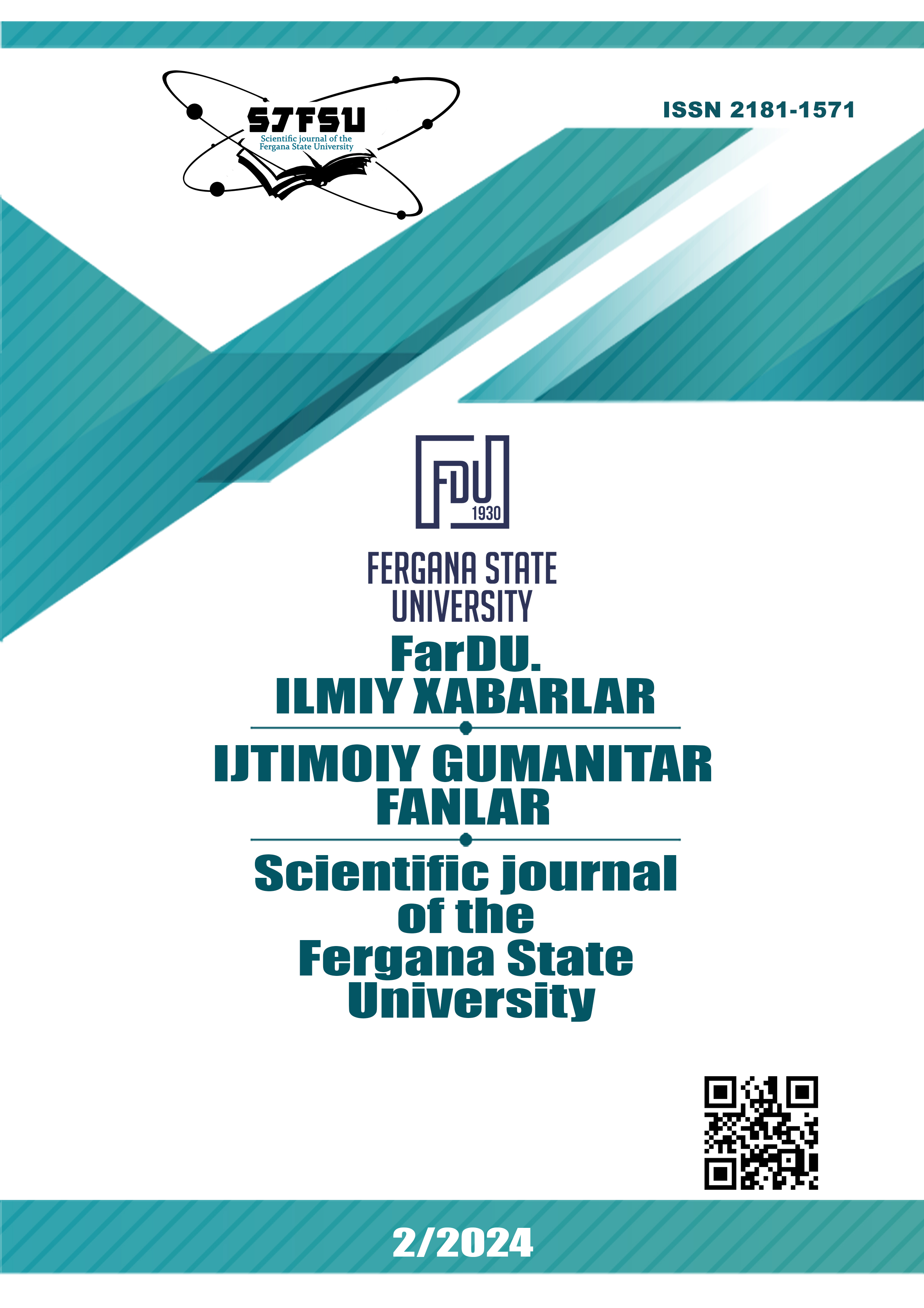THE DICTIONARY IS A MESSENGER OF TIME AND PERIOD (About the evolution of Uzbek dictionaries)
Keywords:
word, vocabulary, language, explanation, period, time, manuscript, number, term, monolingual, bilingual, codification, phrase, lexeme.Abstract
The article analyzes the periods of development of Uzbek lexicography, the process of improvement of dictionaries. Opinions about dictionaries from Mahmud Kashgari's "Devonu lugotit turk" to the current "Explanatory dictionary of the Uzbek language" are presented. The influence of the period on lexicography is emphasized. Recognizing that a number of scientific works have been carried out in Uzbek linguistics on the historical development of Uzbek lexicography, the evolution of dictionaries, and taking into account that this issue is the object of separate, special research, the articles published only in recent years are discussed. Conclusions are given, paying attention to the aspects related to time and period of the presented dictionaries. First of all, all the first dictionaries were bilingual (some of them were multilingual) and were created to translate foreign language words, proverbs and sayings, phrases into Turkish (Uzbek). Secondly, they are not large, the range of words obtained is made up of popular everyday words. Thirdly, due to the requirements of the time, many dictionaries were in handwritten form, and there were not many of them. Fourthly, the monolingual explanatory dictionary of the Uzbek language was not compiled until the last 20th-21st centuries. The first explanatory dictionary of the Uzbek language was created in the second half of the 20th century. All considered dictionaries can be recognized as a bright "mirror" of their time.
References
Мадвалиев, А., & Ҳаққул, И. (2017). Ўзбек терминологияси ва лексикографияси масалалари. Davlat ilmiĭ nashriyoti.
Мухторхон Умархўжаев.. Сўз дунёси – тил дунёси, тил дунёси – сўз дунёси, “Андижон давлат университети” нашриёти, (2023) 67-68 б.
Иброҳимов, С. Фарғона шеваларининг касб-ҳунар лексикаси. Ўзбекистон ССР Фанлар Академияси нашриёти. (1956).
Ҳасан, Б. Қуръон-и карим сўзларининг арабча-ўзбекча кўрсаткичли луғати. Т.: Адабиёт ва санъат, (1995). 518.
Умархўжаев, М.Э.. Диний атамалар ва иборалар. Оммабоп қисқача изоҳли луғат. Ғафур Ғулом номидаги нашриёт-матбаа ижодий уйи. (2016)
Ўзбек тилининг изоҳли луғати Москва, Издательство “Русский язык”, 1981, 1-бет.
Downloads
Published
Issue
Section
License
Copyright (c) 2024 Scientific journal of the Fergana State University

This work is licensed under a Creative Commons Attribution-NonCommercial-NoDerivatives 4.0 International License.
Most read articles by the same author(s)
- , O‘ZBEKISTONDA NOMODDIY MADANIY MEROS MUHOFAZASI , Scientific journal of the Fergana State University: No. 3 (2024): Scientific journal of the Fergana State University (Social humanities sciences)
- , , , , , , , SYNTHESIS AND SPECTRAL ANALYSIS OF PEROVSKITE QUANTUM DOTS CONTAINING CsPbBr3 BY LIGAND ASSISTED REPRECIPITATION METHOD AT ROOM TEMPERATURE , Scientific journal of the Fergana State University: No. 5 (2024): FarDU.Ilmiy xabarlar jurnali (Aniq va tabiiy fanlar)
- , SCIENTIFIC AND PEDAGOGICAL FOUNDATIONS OF DEVELOPING LOGICAL THINKING IN FUTURE EDUCATORS , Scientific journal of the Fergana State University: No. 1 (2025): FarDU ilmiy xabarlari jurnali (PEDAGOGIKA)
- , PSYCHOLOGICAL AND PEDAGOGICAL ASPECTS OF DEVELOPING LOGICAL THINKING IN FUTURE EDUCATORS THROUGH INTERDISCIPLINARY COOPERATION , Scientific journal of the Fergana State University: No. 2 (2023): Scientific journal of the Fergana State University (Exact and natural sciences)
- , INTEGRATIVE EDUCATIONAL TECHNOLOGIES OF INTELLECTUAL CULTURE DEVELOPMENT IN FUTURE TEACHERS , Scientific journal of the Fergana State University: No. 2 (2023): Scientific journal of the Fergana State University (Social humanities sciences)
- , PEDAGOGICAL CONDITIONS OF LOGICAL THINKING DEVELOPMENT IN FUTURE EDUCATORS , Scientific journal of the Fergana State University: No. 3 (2023): FarDU ilmiy xabarlari jurnali (Aniq va tabiiy fanlar)
- , APPLICATION OF MODERN INFORMATION TECHNOLOGIES IN TEACHING THE SUBJECT "BASIC TUTORING ACTIVITY" , Scientific journal of the Fergana State University: No. 4 (2024): Scientific journal of the Fergana State University (Social humanities sciences)
- , A DEEP REFLECTION ON THE POETICAL CHARACTERISTICS OF THE METAPHORS OF “KUTADGU BILIG” , Scientific journal of the Fergana State University: No. 2 (2025): FarDU ilmiy xabarlari jurnali (FILOLOGIYA)
- Jasurbek Xalliyev , COMMONALITY IN THE USE OF PHILOSOPHICAL AND ENLIGHTENMENT TERMS IN AGAHI'S HISTORICAL AND LYRICAL WORKS , Scientific journal of the Fergana State University: No. 1 (2022): Scientific journal of the Fergana State University
- , ASSESSMENT OF THE DYNAMIC INDICATORS OF MUDFLOW FLOODS , Scientific journal of the Fergana State University: No. 2 (2025): FarDU ilmiy xabarlari jurnali (Tabiiy fanlar)

